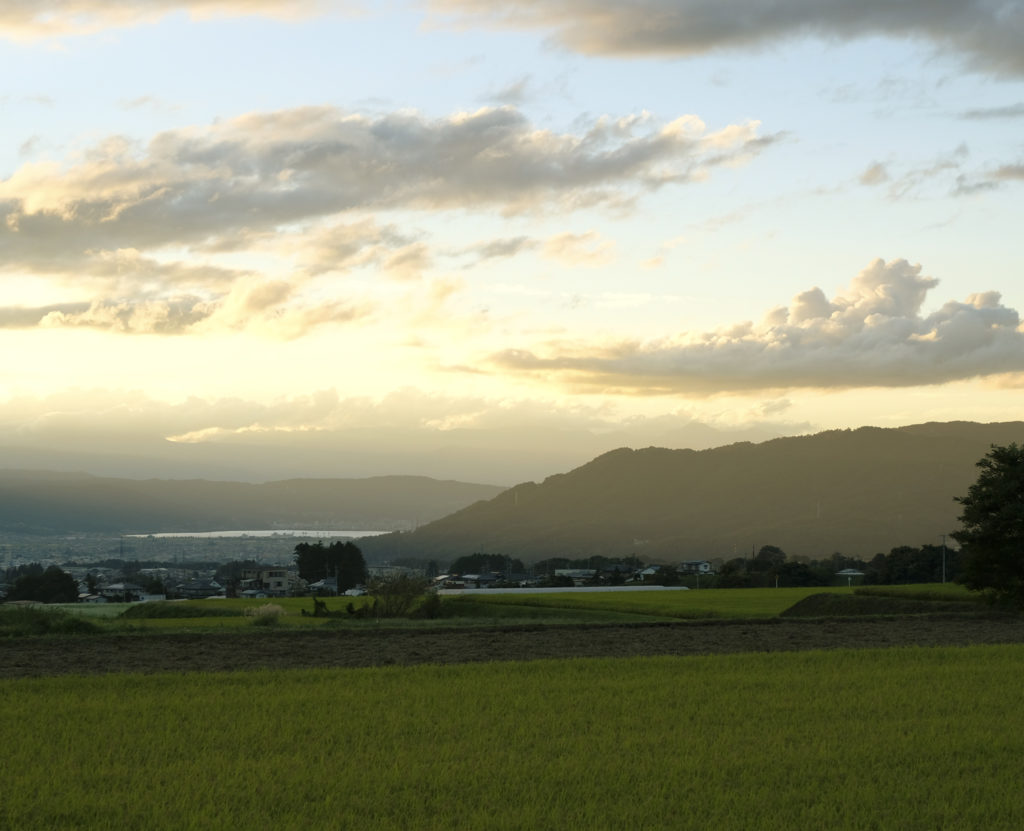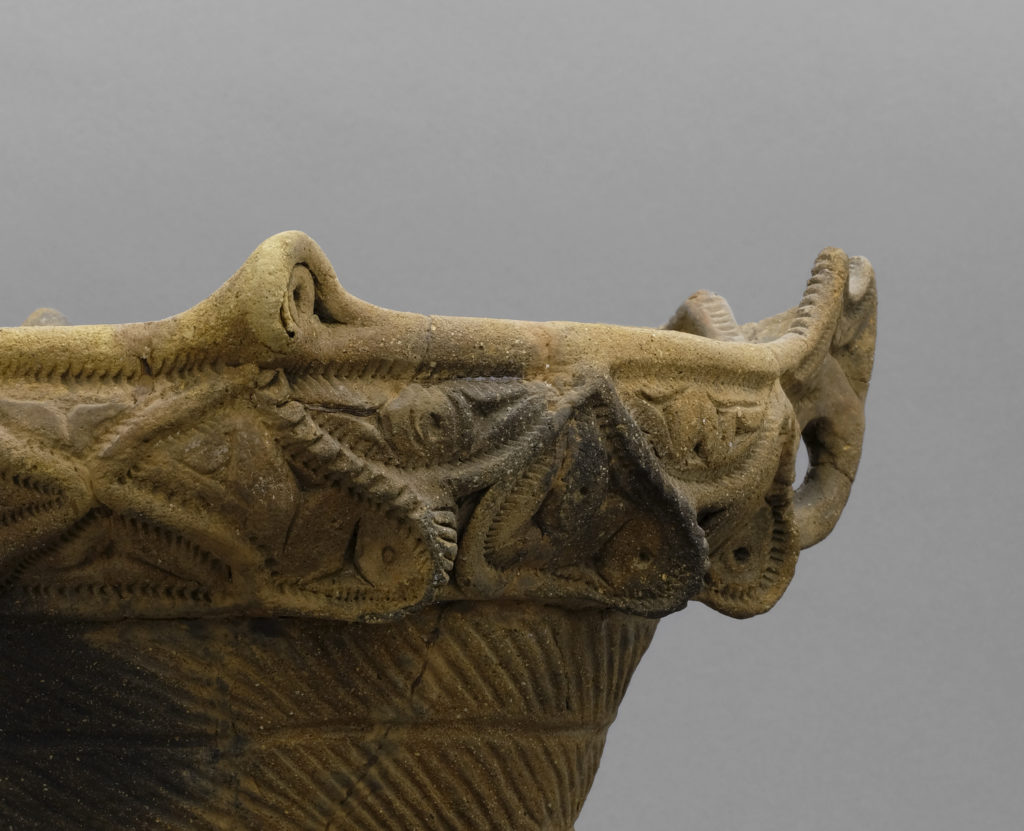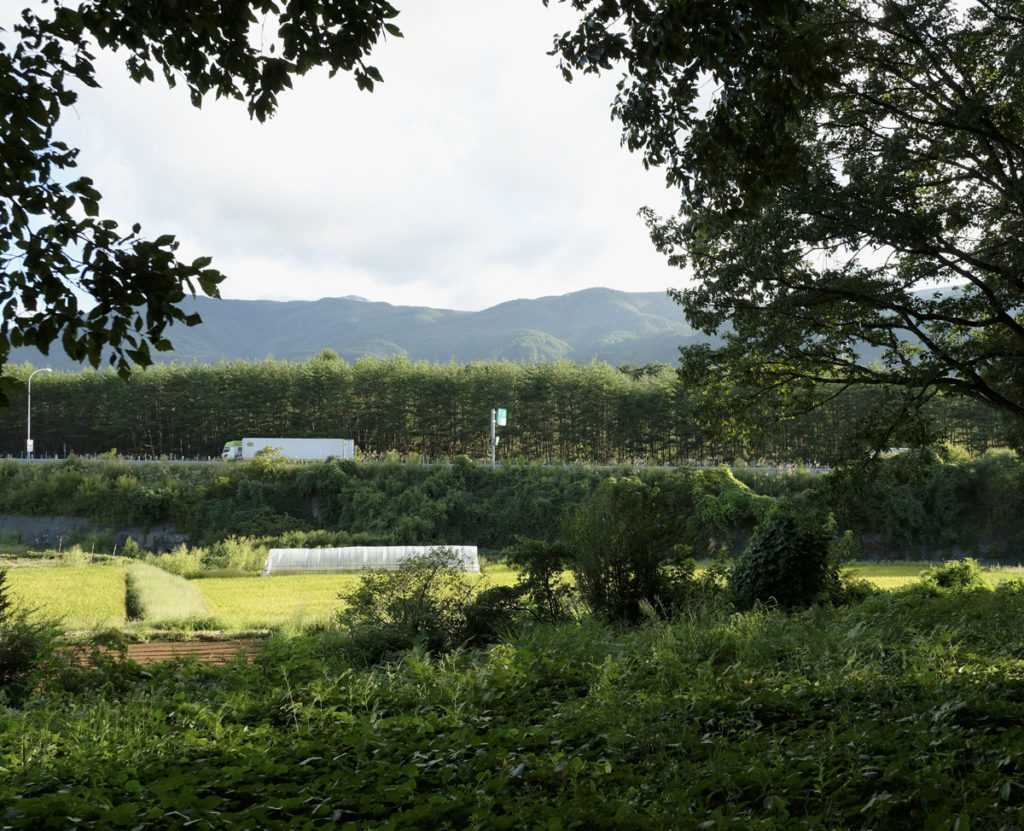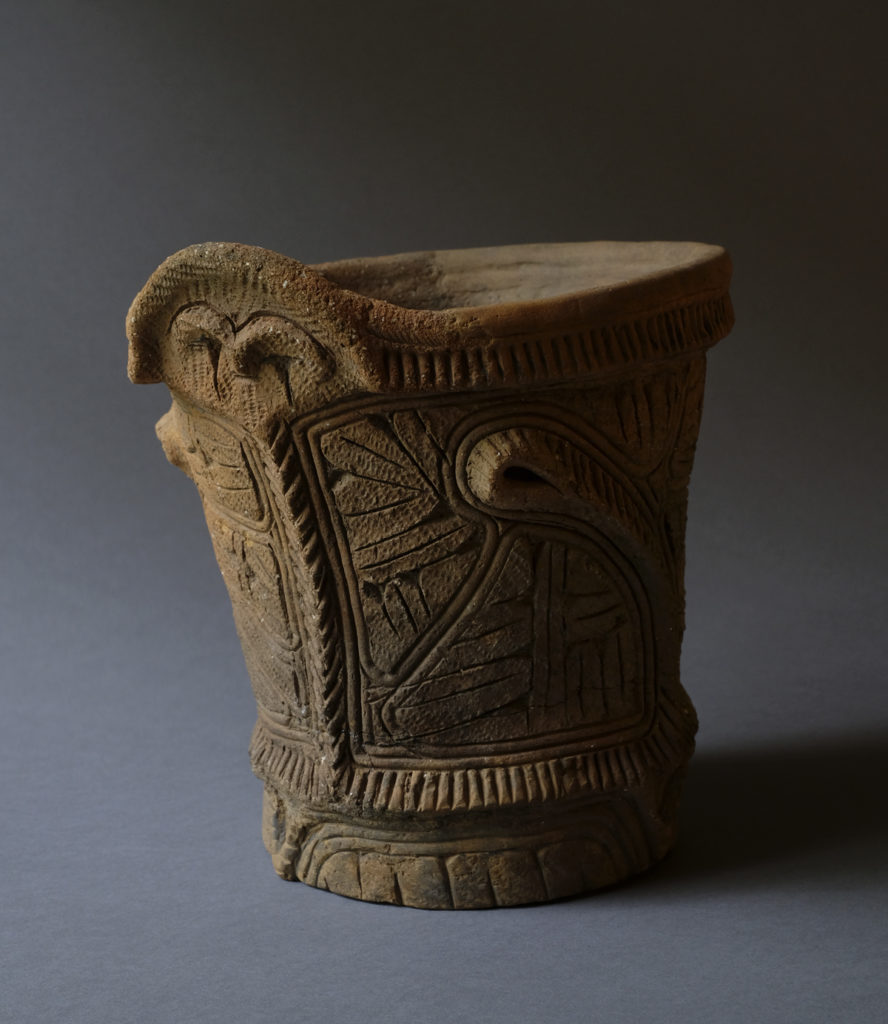Teardrop and the Mother Figure of Lake Suwa
In early September, when Typhoon Jebi was passing through Japan with violent winds and rain, I was visiting the Yatsugatake Museum of Art, situated in the forest of Hara Village in Suwa-gun, Nagano Prefecture. This area lies in the foothills of Yatsugatake, believed to be the home of a flourishing culture and as much as a fourth of the Japanese population in the Middle Jomon period (about 4,500–5,500 years ago). At an elevation of over 1,000 meters, the area commands a view of the towering outline of Mt. Tateshina and the Yatsugatake Mountains on a fine day.

On this day, I came to photograph the Jomon pottery stored in the museum’s collection of archaeological artifacts. The rain wasn’t all that heavy when I began shooting. Gradually, the winds grew stronger and made the trees outside the window sway wildly. The moment after I had set up a piece of pottery for the last shot, the ceiling lights went out without a sound—a power outage. I learned later that a tree had fallen nearby and severed the electric cables running to the museum.
I moved the pot closer to the light filtering through the curtains and looked through the viewfinder at the pot’s face with downcast eyes. The teardrop rolling down its cheek seemed to create a darker shadow than before. By the time I wrapped up the shoot, it was too dark to even see my own feet. I left the camera on the tripod and nearly stepped away to take a break, but then stopped short. Unbelievable. The gray backdrop paper beneath the pot was stained with a drop of water. Fearing a leak, I looked up at the ceiling, but there was nothing. Where did that droplet come from?
I still haven’t figured it out. The truth remains in the dark. All I know is the droplet was there. The stain on the paper proves it. The mystery happened during the storm in the darkness of the unlit room.

The Oishi Site, where that pot was unearthed, was a settlement arranged in a circle around a plaza from which numerous tombs were found. That is, the people who lived there are believed to have kept the dead very close and ready for visiting on a daily basis. I recalled what I was told by Mr. Jun Sasaki, from the Hara Village education division, on the day before my photo shoot during our stroll through the Akyu Site, a ritual setting dating to the Early Jomon (about 7,500–5,500 years ago). “The Jomon people’s concept of life and death may have been different from ours today. They must have had a far stronger attachment to the dead, a far deeper respect for the dead.”
A stone circle was found here in a spot with a view of the picturesque Mt. Tateshina, aka the Fuji of Suwa. An amazing 200,000 fist-sized to human head-sized rocks also turned up here. How long it took to collect so many rocks was beyond my imagination. All I knew was that the place was designed to be a place for endless prayer.

How did the Jomon culture remain intact for so long in such a comfortable living environment? Mr. Sasaki’s response came as a surprise. The high elevation meant that Hara Village wasn’t ideal for growing rice, and so signs of life faded after the Yayoi period (about 2500–1700 years ago). The site was occupied for a while in the Heian period (about 794–1185 years ago), and then later designated off limits when it became a hunting grounds of Suwa Taisha Shrine. So this place was in fact protected by deities—I couldn’t help wondering if that was pure coincidence.
For me, Hara Village is already a place of myriad miracles. Now, I invite you to come and stand on the gentle slopes leading from the Yatsugatake Mountains to the Suwa Basin, and see the site with your own eyes. I promise the view of Lake Suwa glistening with water will look even more endearing from here.
<PAPERSKY no.58(2018)>

Jomon Fieldwork | Nao Tsuda × Lucas B.B. Interview
A conversation between ‘Jomon Fieldwork’ Photographer and writer Nao Tsuda and Papersky’s Editor-in-chief Lucas B.B. The two discuss the ways Jomon culture continues to play an important role in modern day Japan. The video was filmed at Papersky’s office in Shibuya in conjunction with Tsuda’s exhibition “Eyes of the Lake and Mother Mountain Plate” held at the Yatsugatake Museum in Nagano.
Nao Tsuda | Photographer
Through his world travels he has been pointing his lens both into the ancient past and towards the future to translate the story of people and their natural world.
tsudanao.com











